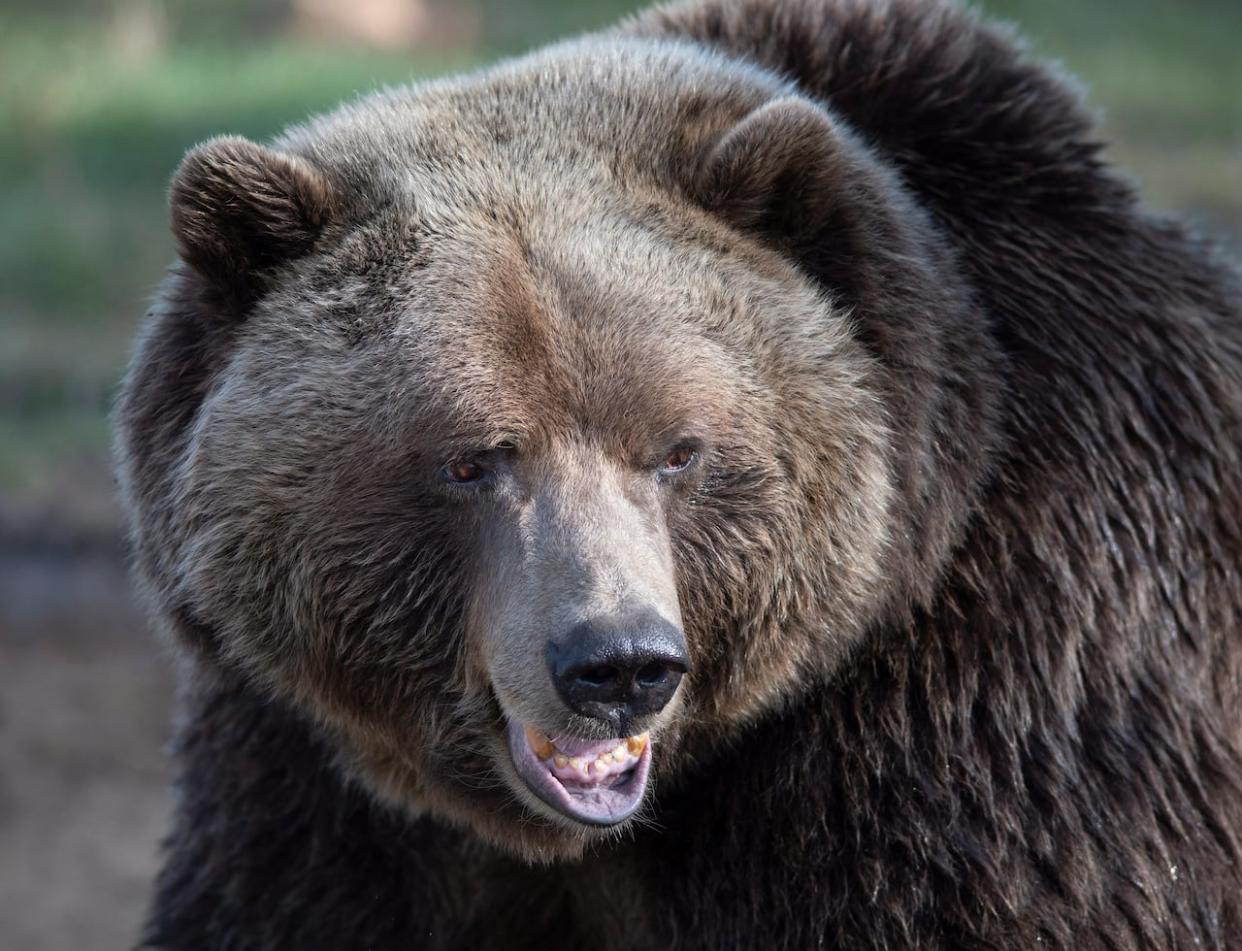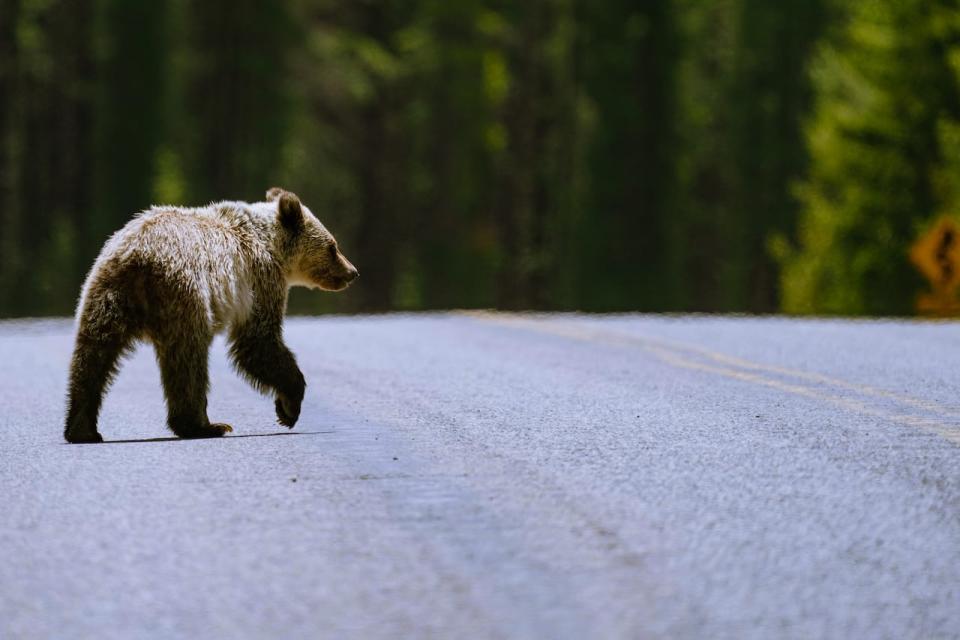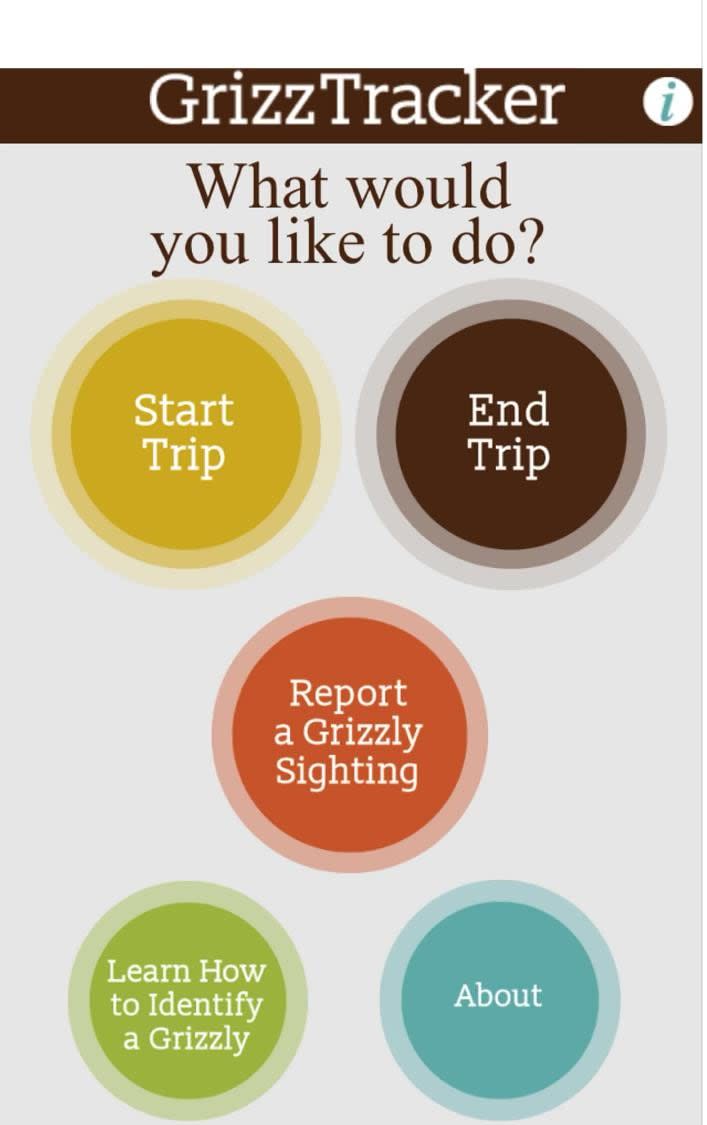Bear-tracking study celebrates citizen science in Alberta's grizzly country

A new study suggests citizen science could help restore Alberta's grizzly bear numbers, but critics caution that without government action to preserve critical habitat and raise awareness, the elusive predator will remain a threatened species.
The research, published in February in the science journal Facets, examines the development of GrizzTracker, an app created to gather data about the bears' movements through the northwestern reaches of their remaining Alberta range.
Courtney Hughes, a study author and a senior landscape ecologist with Alberta Forestry and Parks, said people who live in bear country have a crucial role to play in grizzly conservation.
"It's a really great example of how working together is super important to consider when trying to move the needle," said Hughes, who helped create GrizzTracker. "Folks do want to contribute.
"People are passionate about certain things, whether it's grizzly bears or butterflies."
Tracking bears in the name of conservation could help protect the species, Hughes and her fellow researchers found.
Critics, however, caution that citizen science is not enough on its own to help grizzly populations recover.
Brian Horejsi, a wildlife scientist who has been studying grizzlies since the 1970s, said he questions how gathering data with the app has served conservation efforts on the ground.
"I don't see any trickle-down effect for conservation of either bear habitats or bear populations," Horejsi said in an interview.
Horejsi said if the province is serious about protecting grizzly bears, it must impose limits on development and roads in bear habitat.
"We have a vast storehouse of knowledge already," he said.
"We know what we need to know about bears to protect habitat and populations, and we're still not doing it."

A grizzly cub on Highway 40 in Peter Lougheed Provincial Park on June 15, 2021. The species has been under threat in Alberta for decades. (David Gray/CBC)
Grizzlies have been listed as a threatened species in Alberta since 2010, when fewer than 800 could be found across the province. Nationally, they are classified as a species of concern.
Once abundant, the bears previously roamed almost every part of Alberta.
But as human development, roads and rail lines cut through critical habitat, grizzlies vanished from much of the landscape.
Their range in the province is now limited to the Rocky Mountain and Foothills natural regions.
The latest government census found that, at most, 973 remain.
Testing the tracker
The study began as the GrizzTracker app was developed and tested. Two of the study's four authors are with Mount Royal University while Hughes and another are with the provincial government.
Developed by Alberta Environment, GrizzTracker was designed as public education tool that would streamline data collection, map bear movements and identify potential hot spots for human-bear encounters.
Released to the public in 2017, the app allows users to report sightings and catalogue them with photos, GPS data and observations on bear behaviour.
"We really needed to identify a standardized and automated way to make collecting these bear observations not just more efficient, but also more rigorous," Hughes said. "But it was also to show that Albertans can participate in the collection of scientific data."
Bear Management Area 1 served as the testing ground for the program. The zone covers a vast area, stretching west from Peace River to the B.C. boundary and north, beyond the bounds of Notikewin Provincial Park.
Hughes said there has been a lot of research in southern and central Alberta southern ranges, but grizzly bears in Bear Management Area 1 are much less understood.
Various people in the area, including farmers and industry workers, were keen to help fill that gap in the research and signed on for the app's testing phase.
The test group was made of up members of the Northwest Grizzly Bear Team, a working group created in 2011 to research local management needs.

GrizzTracker encourages users to report sightings of grizzly bears with observations and photos. (GrizzTracker)
"Folks were seeing bears and they wanted something better than, you know, a note in a windshield behind the wipers to say, 'Hey, I saw a bear,'" Hughes said.
"They wanted to contribute, and we needed better information. And so it really was this opportunity that sparked, in that place, because of all of those conditions."
Hughes said the GrizzTracker program offers a success story in community science. She would like to see it expand to bear ranges across North America, but said the success of citizen science programs ultimately rests with the public.
She hopes the study will inspire other conservationists to enlist the help of non-scientists. She said many researchers have already done so to aid in data collection on everything from birds and whales, to forests and asteroids.
"There is definitely growing, formal momentum in this," she said. "I think it's always been there. It's just now we're harnessing it."
Darío Fernández-Bellon, project lead of Alberta's Grizzly Bear Monitoring Project, said more government resources need to be allocated to grizzly bear research.
He said little in-depth monitoring is being done on the size and health of existing populations. Public awareness about ways to avoid bad encounters with bears is lacking, he said
But Fernández-Bellon said he sees the value of citizen science in protecting grizzlies. His research team was recently involved in a scat-gathering project that enlisted the help of volunteers in collecting samples.
Grizzlies are elusive and sparse on the landscape and having more eyes on the ground is helpful, he said. But the true value of citizen science programs lies in the public awareness they create.
"Research that happens just for scientists to read really loses sight of the fact that research is done ultimately for society," he said. "You need to bridge that gap between research and the general public."


